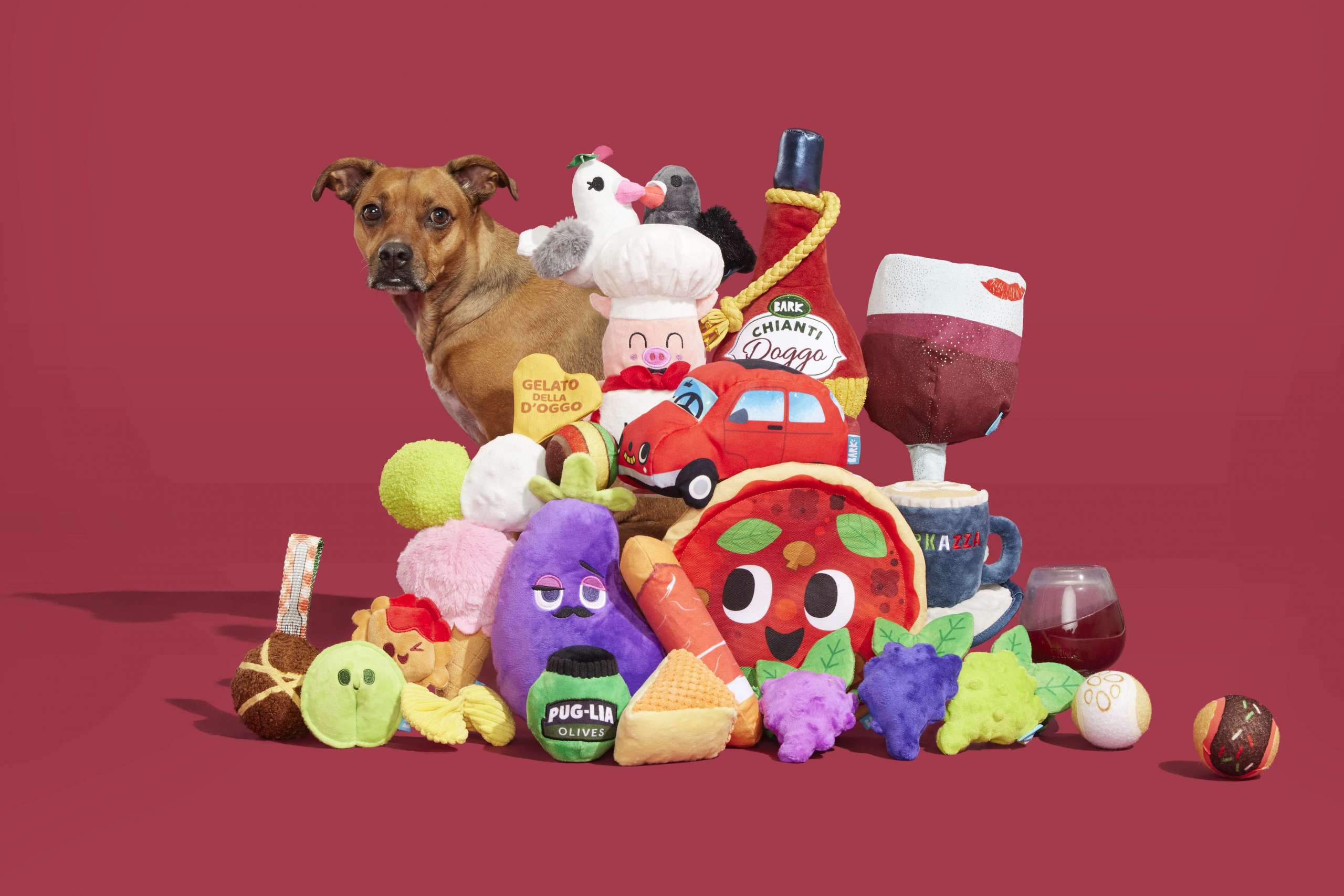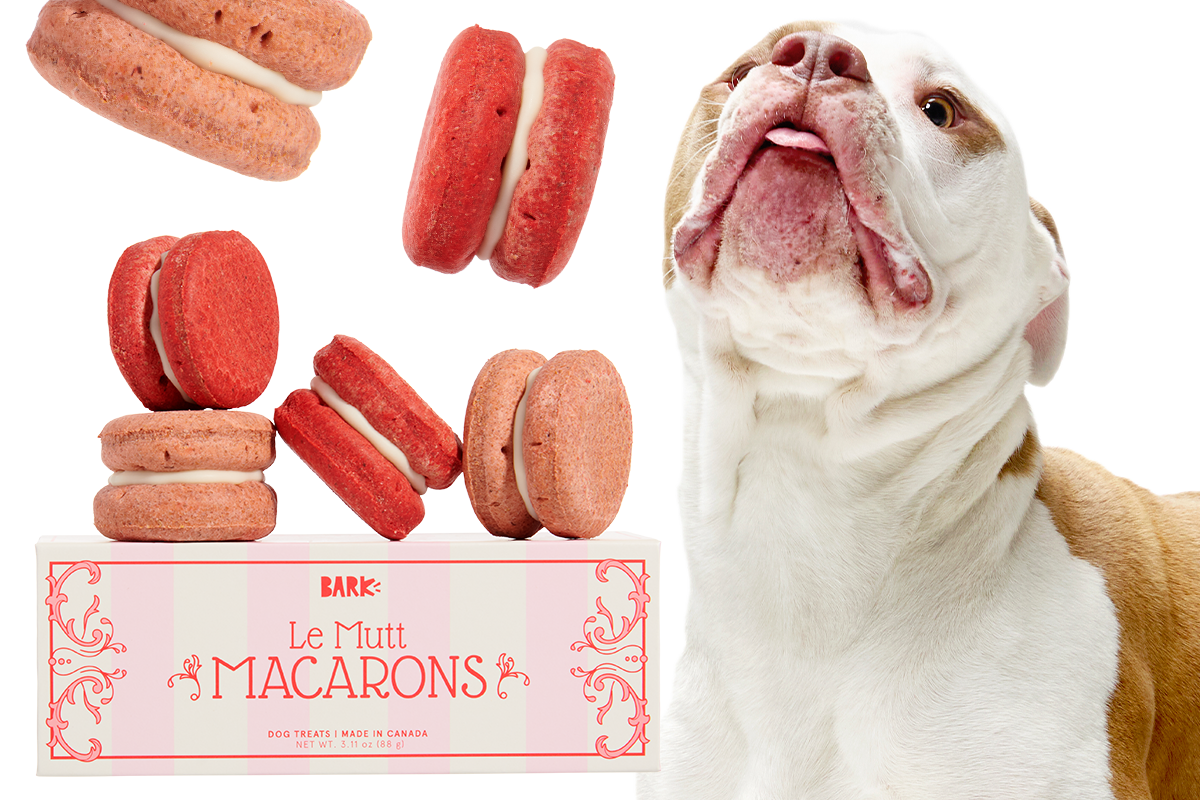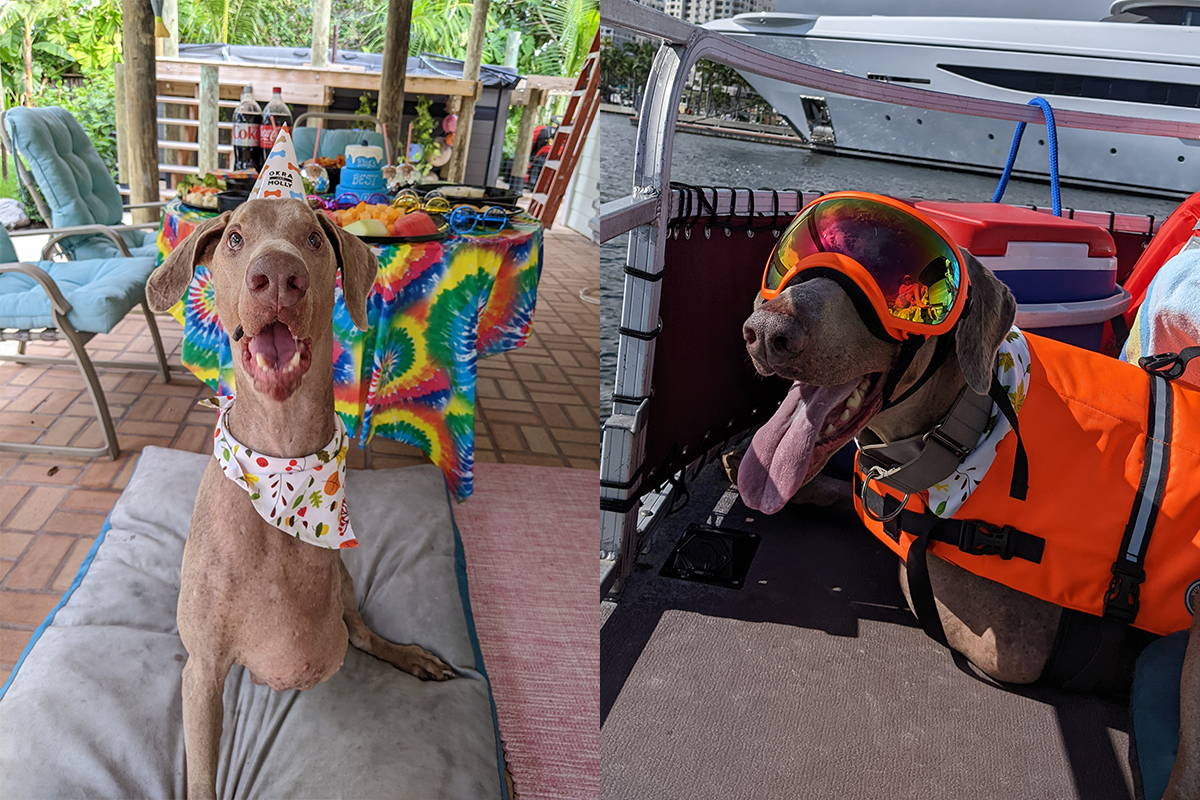Want to know the real dirty truth? 80% of dogs over the age of three develop dental disease, which means most people do little or nothing to maintain their dogs’ oral health. Zero. Zilch. Stinky breath and brown-and-yellow teeth all around. Truths don’t get much dirtier than that.
Once I started brushing my pup’s teeth, I realized why. Dog vs. toothbrush is a battle often already lost, and saliva fingers are a risk you must be willing to take.
There had to be a better way. We don’t quit brushing our teeth because it’s annoying, and neither should your dog. So we tossed the toothbrush and started from scratch with the enzyme-powered Bright Dental Kit and a “brushing” routine that outperforms any toothpaste, chew, or toy alone. Seriously.


What Is BARK Bright?
Bright Dental is the first and only daily dual toothpaste and dental chew system to keep dogs’ funky breath and plaque buildup under control. The best part? Your dog does all the work.
Each kit includes a month’s supply of tasty chicken dental chews and triple-enzymatic toothpaste.


The enzymes are key—no existing dog toothpaste uses THREE enzymes to break down the problem-causing debris that causes bad breath and other dental issues. When used together with the tough yet chewy dental chews, it keeps dirty mouths clean and helps prevent the complications that come with advanced dental disease.
Dental Terms You Should Know
Periodontal (Dental) Disease: Put simply, dental disease is an infection of the mouth. It begins with small, seemingly harmless things like bad breath and yellow or brownish plaque buildup on the tooth’s surface, and dogs may lose interest in eating hard kibble or chewing tough rubber or nylon toys.
Related Article: The 4 Stages Of Periodontal Disease In Dogs: A (Not So Gross) Visual Guide
They won’t tell you these activities have become uncomfortable or downright painful, so it’s your job to spot the signs early on. Over time, these symptoms can develop into nastier things like tartar buildup below the gumline, inflamed gums, loose teeth, and eventual tooth loss. Severe forms of the condition may also lead to heart disease as bacteria in the mouth pass into the bloodstream and accumulates in dogs’ arteries.
Plaque vs Tartar: The easiest way to distinguish between plaque and tartar is in how easy they are to remove. Plaque can be removed with regular brushing and with normal chewing action, but tartar can’t be removed without a deep cleaning, which requires putting a dog under anesthesia.
But what are they, actually? Plaque is a soft build-up of food deposits and bacteria (aka, the #1 reason why your pup might have stanky breath!). The danger of plaque is that if it gets into the gums and isn’t regularly removed, it can initiate gingivitis (see below for that definition). An important aspect of plaque is that while regular brushing and chewing help with the removal process, it starts to form again on the teeth right away after removal—which is why consistency is key.
Tartar, on the other hand, is a much harder deposit on the teeth, identified by a distinctive yellow coloring. It’s comprised of minerals and food deposits that, when left untreated, can cause periodontal inflammation.
Inflammation (where in the mouth it occurs): The danger of inflammation isn’t to the teeth, but to the gums supporting the teeth. Here’s how it happens: when plaque builds up on the tooth structure, there’s always a risk it could go deeper into the gum line. If a pocket forms, bacteria can easily sneak in and make the gum red, swollen, and tender to touch. Inflammation is also one of the key signs of our next glossary term: gingivitis.
Gingivitis: It sounds like a comic-book villain, and with good reason: gingivitis is the often-insidious beginning to a larger periodontal problem. Every dog has a ‘gingiva’, a.k.a. the area of gum directly surrounding and supporting the teeth. Veterinarians assess the health of the gingiva based on a number of factors, such as:
- Inflammation level (Is the gum swollen or tender?)
- Color (Pink is good, red is bad.)
- Does it bleed easily? (If so, also bad.)
- Is the gum recessed at all? (Again, you get the picture. Bad.)


Anesthesia: So, is a dental cleaning the same thing as a serious surgery? Not exactly, but anesthesia is necessary in order to perform one, to make sure that your dog’s regulatory systems are balanced, and to give the veterinarians better access to harder-to-see-and-reach teeth.
While under anesthesia, your dog is carefully monitored to ensure their pulse, blood oxygen levels, temperature, and blood circulation are all stable. Then the veterinarian will use special tools designed specifically for dogs (i.e., do not try to use these at home!) to scrape off tartar and remove any bacteria from pockets in the gum line. Then they polish the teeth with special toothpaste, just like the dentist.
Veterinary Dentist vs. Veterinarian vs. Vet Tech: What’s the difference between a veterinary dentist and a vet tech? A board-certified veterinarian has received additional schooling similar to med school, making them qualified to diagnose and treat animals within their specialty. Once certified, some veterinarians go on to receive even more training so that they can specialize specifically in dentistry and dental surgery.
A vet tech also receives additional schooling, but is certified much faster than a veterinarian. They are in many cases authorized to perform procedures necessary for the dog’s care (some vet techs can perform dental cleanings on their own, but most are supervised by a veterinary dentist). Most importantly, they are the liaison between the pup, the parent, and the doctor. They take vitals, perform routine exams, and even sometimes sneak in a (dentist-approved!) treat or two.
Fear Free Dentistry: Remember how scary going to the dentist was as a kid? That’s what veterinary dentists want to avoid, by practicing what they call Fear Free Dentistry. It’s a mindset more than anything else, aimed at making sure your pet is comfortable and happy before anything is done to them. This often involves visits to the dentist where nothing actually happens! Your dog can expect to be petted and played with so they don’t associate their vet and vet tech with fear.
Not every dentist has this methodology in place, so make sure you ask what measures they take to ensure every dog feels safe.
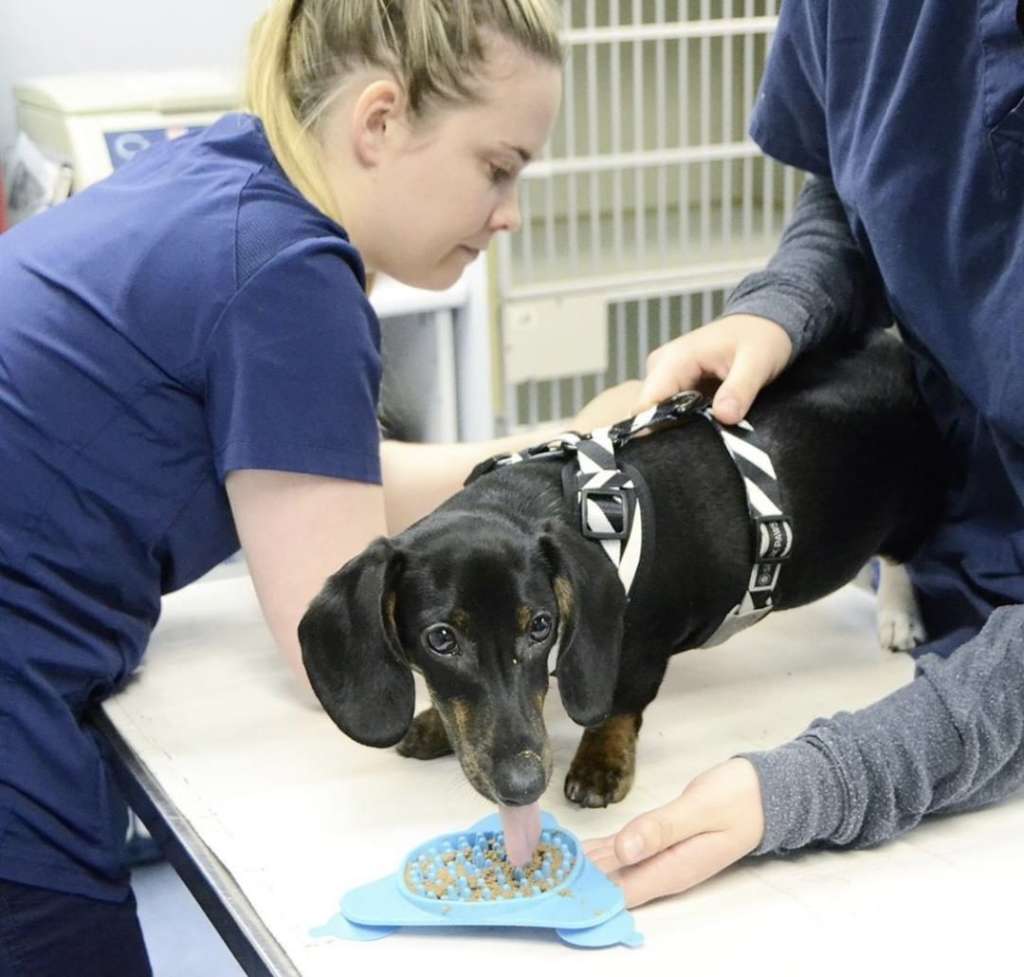

What Do The Enzymes Do?
We teamed up with Novozymes in Denmark (a global biotech company with a lot of really smart cookies) to develop the most effective, dog-friendly enzyme formula with an oh-so irresistible chicken flavor. Real chicken, of course.
Enzymes are molecules, usually proteins, that speed up the chemical reactions in cells in lots of different areas of the body. Let us introduce you to our enzyme trio and explain how they work:
Enzyme #1: Amyloglucosidase (AMG)
AMG breaks down the starches and complex sugars in your dog’s mouth and turns it into glucose, a simple sugar.
Enzyme #2: Glucose oxidase (GOX)
GOX takes that glucose and transforms it into a safe and effective natural cleaning agent. Think of it like a team of very tiny toothbrushes scrubbing away bacteria.
Enzyme #3: Lactoperoxidase
Lactoperoxidase is the real superhero. It triggers a catalyst of reactions to boost the toothbrushes’ glucose-conversion performance, and helps other compounds already present in your dog’s saliva (like natural antibacterial agents) do their best work.
We call all of this an enzyme cascade. Each component needs to be present to have the full effect, and any one acting alone (like you’ll find in existing “enzymatic” dog toothpastes on the market) just won’t do.
The result? A healthier microbiome in the mouth that prevents the progression of plaque buildup and tooth decay, and keeps bad breath under control. Finally, you can accept your pup’s accidental up-the-nose kisses without grimacing.
How Does BARK Bright Work?
This is the best part! There are just two daily steps, and you only need to do one yourself. GOODBYE, SALIVA FINGERS!
First, squeeze the toothpaste along the deep groove of the dental chew.
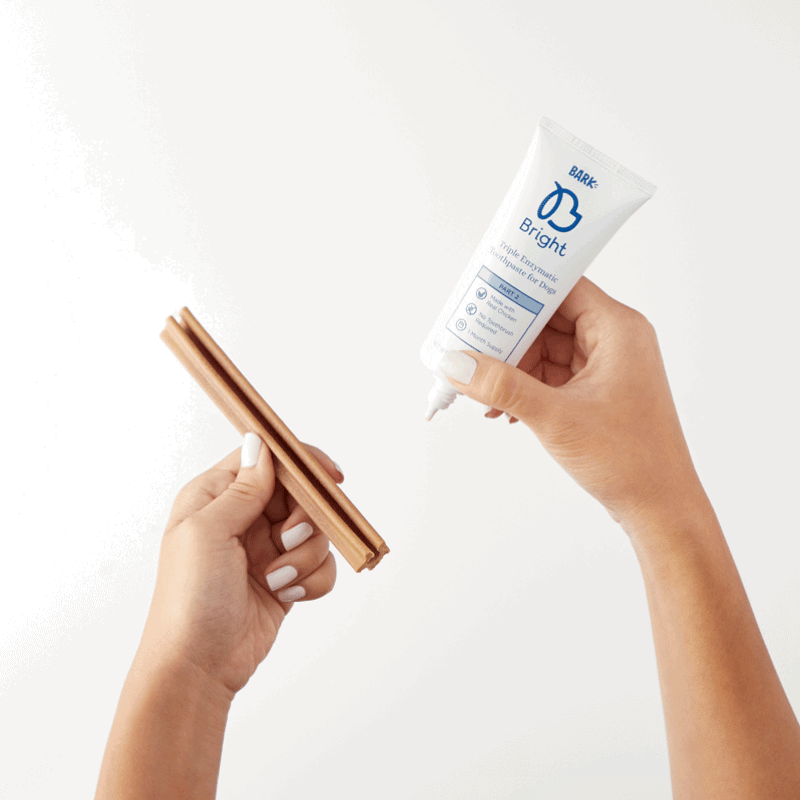

Next, let your dog do the rest! The gentle abrasion of the chewing action helps expose more plaque on the tooth’s surface to the enzymes already found in your dog’s mouth. The Bright toothpaste adds even more of those enzymes into the mix to supercharge their benefits.
Oh, and the toothpaste is water-based, so it won’t stain carpets or other fabrics.
What’s In It?
You’re our kind of dog people. You deserve to know what’s in the things you give your dog, and understand exactly what they do.
Bright Toothpaste Ingredients
- Water: You know the stuff. It forms the basis of the toothpaste.
- Lactose-free skim milk powder: Rich in protein, this powder is gluten-and starch-free, with natural immune boosters that help the enzymes work even better.
- Glycerol: Found in every living cell, it’s a natural substance that keeps the ingredients stable.
- Sorbitol: A sugar alcohol that occurs naturally in some fruits, it’s used as a sweetener with fewer calories per gram than sugar.
- Chicken powder: Made from real chicken.
- Microcrystalline cellulose: Used as a thickening agent, this makes sure the toothpaste “sticks” to your dog’s teeth long enough to work its magic.
- Alginate: A thickening agent extracted from seaweed.
- Citric acid: Regulates pH and ensures that our enzymes are alive and kicking when they reach your pup’s mouth.
- Enzymes: Three, to be exact. We add even more of the ones already in your dog’s saliva so they can work triple-duty.
- Potassium sorbate: A must-have stabilizer that keeps the toothpaste fresh for longer.
- Carboxymethyl cellulose: A helpful stabilizer that’s also found in yogurt. We use the minimum amount.
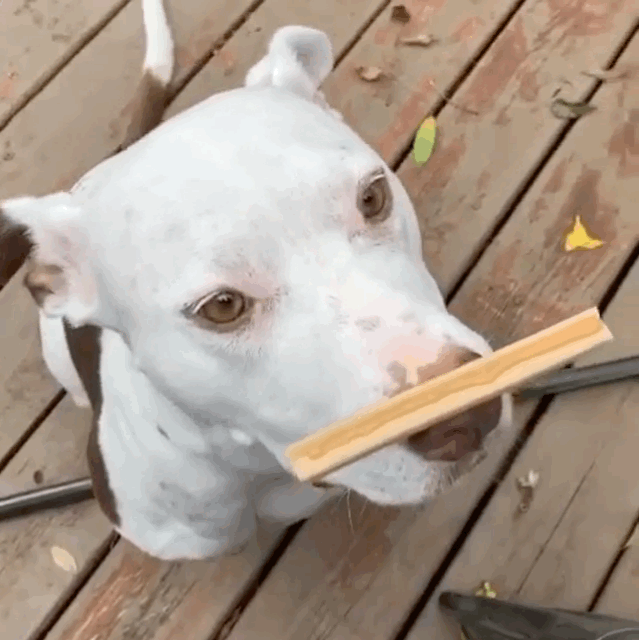

Wait, I Thought Sorbitol Was Bad For Dogs?
We LOVE that you love your dogs enough to be careful with every ingredient; we are too. Sorbitol is a naturally-formed sugar alcohol that is non-toxic to dogs, and it’s used in many other dog and human toothpastes. Consumed in large amounts, just like with any sugar, it may cause an upset tummy. That’s why Bright uses the minimum amount.
Don’t confuse sorbitol with xylitol, another commonly-used sugar substitute in many human products (chewing gum, toothpastes, and even some peanut butters). Unlike sorbitol, xylitol is highly toxic to dogs even in small amounts.
Bright Dental Chew Ingredients
Each dental chew contains 14, 41, and 63 kcal per chew for small, medium, and large sizes, respectively. (fewer than Weight Management Greenies at 88 kcal/treat, or the Original formula at 90 kcal/treat for the regular size chew).


- Potato Starch: A thickener that also adds moisture.
- Gelatin: Used as a thickener.
- Pea Protein: A high-quality protein derived from peas, and a great source of iron.
- Chicken: 100% real, no nonsense.
- Vegetable Glycerin: A simple compound used to to sweeten things up.
- Lecithin: A fatty substance that occurs naturally in plant and animal tissues. It’s used here as a stabilizer.
- Natural Smoke Flavor: This is exactly what it sounds like! Who doesn’t love that fresh-from-the-barbecue taste?
- Citric Acid: Found in citrus fruits, it’s used as a natural preservative.
- Mixed Tocopherols: A source of Vitamin E, and a preservative to keep your chews fresh all month long.


How Do I Sign Up?
Get a Bright Dental Kit shipped right to your dog door with your BarkBox or Super Chewer box each month by adding it via your account! Kits are also available on barkbright.com and at various retailers including Target, Petco, and PetSmart.
How Much Does BARK Bright Cost?
You’ll find the lowest cost per dental kit when you choose Bright as an add-on to your BarkBox or Super Chewer subscription at $25/month.
- barkbright.com: $30/month
- Petco: $37.99 for 1-month kit
- PetSmart: $34.99 for 1-month kit
- Target: $12.99 for a 1-month supply of chews, $24.99 for a 1-month supply of toothpaste; $37.98 total for one month’s worth of each.
Are Dental Chews Alone Enough?
It’s just okay. Using dental chews alone is akin to brushing your teeth with a dry toothbrush and calling it a day. It may scrub off some debris, but it will leave behind new debris from the chew itself.
With Bright, the dental chew acts as that dry toothbrush to do some initial cleaning, but it’s also a means to disperse the enzymatic toothpaste throughout your dog’s mouth. The toothpaste does the real work breaking down soft plaque, and continues to do so long after your dog has finished chewing. (Your green toothbrush chew won’t do that.)
It’s the dental chew and toothpaste together that make this system truly effective, not one or the other. (And if your dog licks the toothpaste off before he chews, that’s completely fine.)
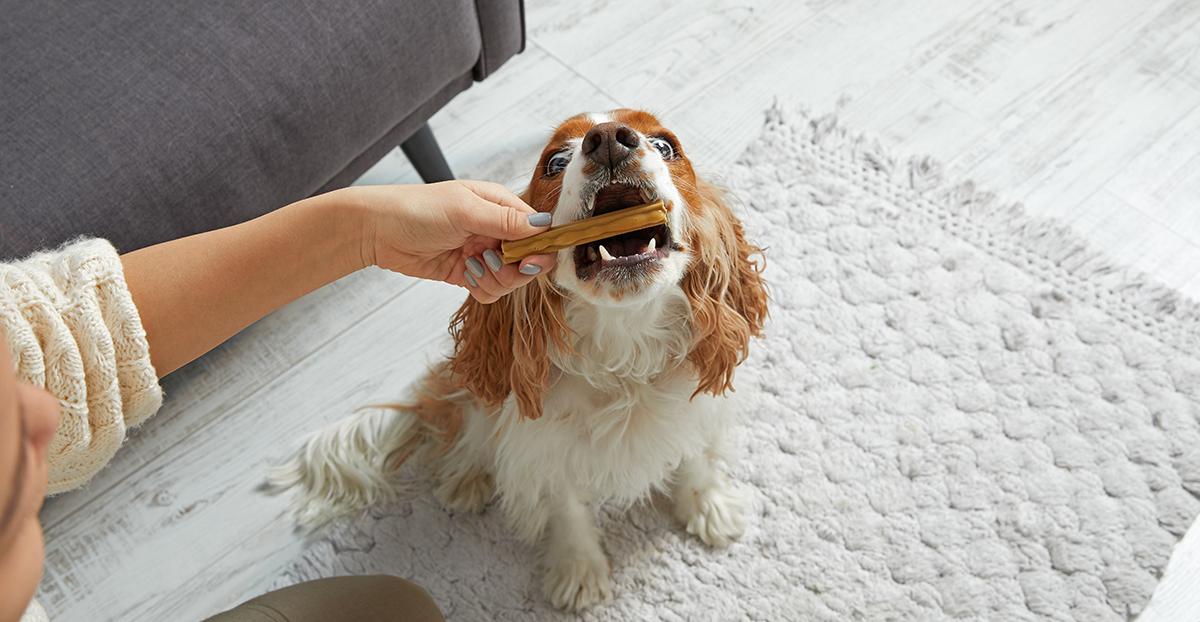

Only 2% of dog parents currently care for their pup’s teeth at home, and our dogs deserve better. Here’s to making “brushing” a fun and enjoyable experience that actually works.
Sign up for Bright today and notice fresher breath in 1–2 weeks!
Oh hey, just so you know: You should always see your vet if you have questions or concerns about your dogs’ health—they know their stuff! Please do not use BARK Bright as an alternative to professional veterinary care if your pups’ doc says it’s necessary.




